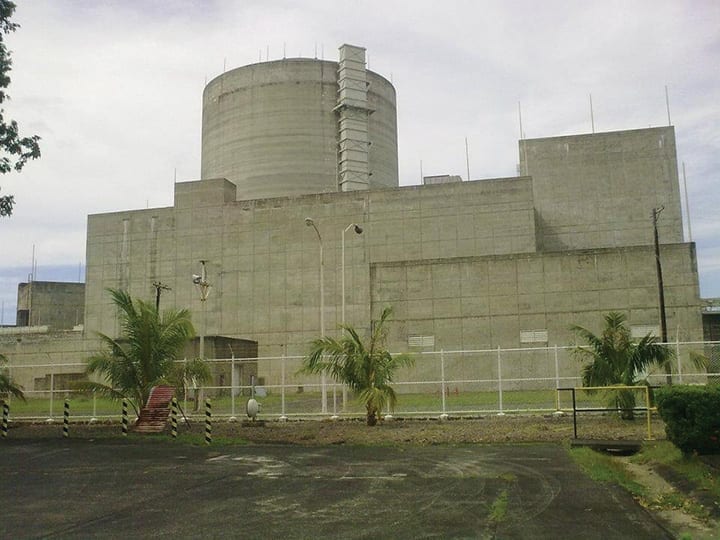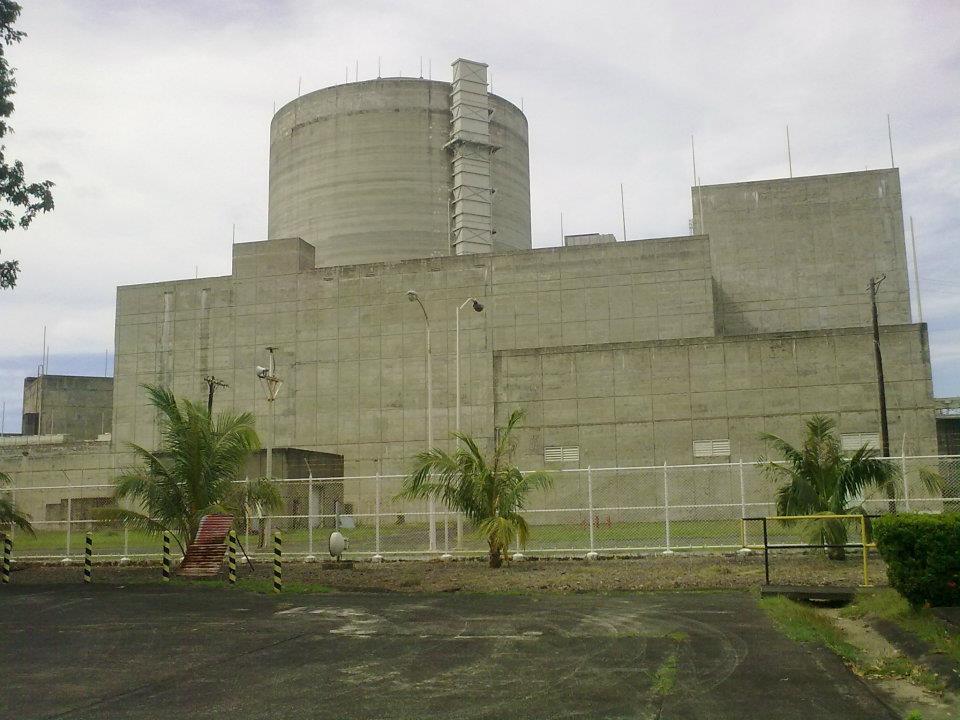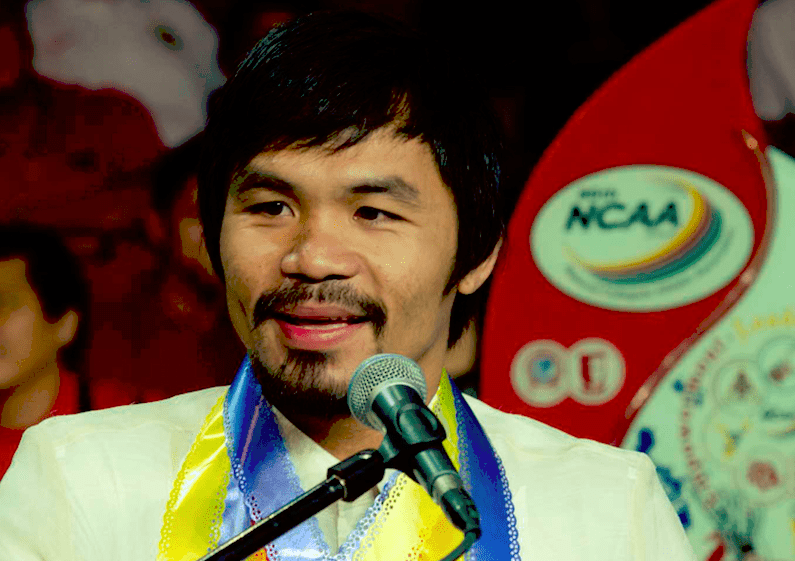Marcos, Pacquiao Could Decide Nuclear’s Fate in Philippines
Credit to Author: Darrell Proctor| Date: Tue, 19 Apr 2022 15:47:23 +0000

The candidate leading in the polls just weeks ahead of the May 9 presidential election in the Philippines has vowed to make nuclear power part of the country’s energy mix if he is elected, saying it is the best technology to tackle the country’s high electricity prices.
Other candidates, while noting the importance of nuclear power, have said the country must transition to more renewable energy resources if it wants solve both economic and climate issues.
Ferdinand Marcos Jr., whose father Ferdinand Marcos Sr. ruled the country from 1965 to 1986, including instituting martial law for nearly a decade, is considered the frontrunner among 10 presidential candidates. The list of rivals includes retired Filipino sports star Manny Pacquiao, revered in the Philippines for his professional boxing career and who has served as a legislator in the country since 2016. Marcos Jr.’s main challenger, according to recent polling, is Leni Robredo, the country’s current vice president.
Others in the race include Manila Mayor Isko Moreno Domagoso, and legislator Panfilo Lacson. The president and vice president are elected separately in the Philippines, with a plurality of more than 40% required to win. Recent polls have shown Marcos Jr. with more than 50% support, with Robredo next with about 25% support, and the others, including Pacquiao, polling in the single digits.

“Our vision for the country is to have at least one nuclear power plant so we can finally produce cheap energy and for us to lower our electricity rates,” Marcos and his running mate, Sara Duterte, daughter of current president Rodrigo Duterte, said in a recent joint statement. Rodrigo Duterte earlier this year signed an executive order detailing the Philippines’ position on a nuclear energy program. Executive Order (EO) No. 164 said nuclear power needs to be part of the country’s energy mix when taking into account economic, political, social, and environmental objectives.
For more background on nuclear power in the Philippines, read “Philippines Taking New Look at Nuclear Power” in the October 2020 issue of POWER.
“Toward this end, and taking into consideration the experience of developed and growing economies, nuclear power shall be tapped as a viable alternative baseload power source along with alternative energy resources, to address the projected decline of coal-fired power plants which come under increasing environmental opposition,” the EO document read.
Nuclear Power a Political Issue
Bringing nuclear power to the island nation has become a political issue due to the high cost of electricity in the Philippines. The country’s latest energy plan, published in January, predicts 7% annual growth in electricity consumption. Coal-fired generation (57%) and gas-fired generation (19%) are currently the leading sources of electricity production, and the country in 2020 pledged not to build more coal-fired power plants as part of its decarbonization effort.

The energy plan, covering 2022 to 2040, predicts demand for natural gas will double, and will need to be served by imports of liquefied natural gas. Filipino energy analysts have said estimated costs for new renewable energy, including both solar power and hydropower, do not show a cost savings over current generation sources. Those analysts have said adding hydropower would mean flooding important rice-growing areas, and the expected investment to add more solar power would be about $22 billion—with solar needing up to a 20% capacity backup from natural gas.
The EO signed by Duterte, the outgoing president, to promote nuclear power generation is “a good springboard for the next administration to pursue its nuclear energy objectives,” said Marcos Jr. and Sara Duterte in a joint statement in March.

U.S. and Filipino officials have exchanged memorandums promoting the countries’ cooperation toward nuclear energy projects, which could include the use of small modular reactor (SMR) technology. Part of the EO also called for reviving construction of the Bataan Nuclear Power Plant (BNPP), the country’s only nuclear power facility and a project mothballed in the 1980s.
Safety Concerns About BNPP
The BNPP was championed by Marcos Sr., and $2.3 billion was spent on its construction. The plant was never commissioned, though, as safety concerns arose after the Three Mile Island accident in the U.S. in 1979, and the Chernobyl disaster in 1986 in the then-Soviet Union. Corazon Aquino, who succeeded Marcos Sr. as president after the latter’s ouster, ordered the BNPP shut down in one of her first acts as the country’s leader.
Other presidential candidates have not followed Marcos Jr. in publicly calling for nuclear power, though all have said high power prices need to be addressed. Pacquiao has attacked the Duterte administration for failing to do more to lower electricity bills. His regional PROMDI party has supported nuclear power, but also supports nuclear weapons.

Robredo, the country’s current vice president, has said she is “open” to nuclear power for the country, though has not publicly said what she is willing to support. Robredo after a presidential debate in March said of the BNPP, though, “We will never revive it because it was not even continued in the first place due to several reasons, so we will not revive its operations ever.”
Robredo continued, “While we are open to discussing tapping nuclear energy, it is the least of our priorities since we have committed to the COP26 to be carbon-neutral by 2050.”
The formal energy plan does not detail what market share nuclear power could hold in the Philippines’ energy future, saying only that the BNPP could be revived, and that there could be new-build projects, including SMRs. A 2021 government study identified 10 potential sites for nuclear power installations across the archipelago’s more than 1,000 inhabited islands, though only a couple were noted as possible locations for a conventional large-scale reactor.
The January-published energy plan did not make predictions about future fuel and capital costs for various types of power generation.
Pacquiao Backs Floating Nuclear
Marcos Jr., who goes by the name Bongbong and often is referred to by his initials, BBM, unsuccessfully ran for vice president in 2016. His campaign focus at that time was on reviving the BNPP project.
Pacquiao earlier this year said the country’s energy policies should be reviewed and criticized previous governments for privatizing utilities, including across the power sector. Pacquiao, considered one of the greatest boxers of all time and a world champion in multiple divisions and weight classes, has said he would not restart the BNPP project, but does support using nuclear energy as part of the country’s future power generation portfolio. He has said floating nuclear power plants should be considered. He also supports renewable energy, saying solar, wind, small hydro and wave energy technologies should all be part of the country’s energy plan.
“We will pay attention to all possible sources of energy but study well for this opportunity so that we will not be short of our power supply,” Pacquiao said during a campaign tour in February. “I am not in favor of privatizing public utilities while we are still in debt. Utilities should be our assets because they can generate revenue for the government.”
Lacson has called nuclear power the “cleanest and cheapest” energy source, and said he supports President Duterte’s EO to include it in the generation mix. But he also noted safety concerns, saying the Philippines’ location in the Pacific Ring of Fire—a region prone to earthquakes and volcanoes—is problematic for nuclear installations.
Domagoso last month said the government should make use of the BNPP site, but not for producing nuclear power, saying, “I will make the nuclear power plant in Bataan like the Silicon Valley, because it would be a waste not to use it as government property. Let’s make use of it but not for creating power source via nuclear because the people of Bataan may be harmed.
“I don’t believe it is time for nuclear energy and that we are ready to maintain a dangerous facility,” Domagoso told local media after a campaign appearance last month. “Right now we have other sources of energy, renewable, gas, or coal.” He said the country should continue to use “the technology that is available and costs much less.”
—Darrell Proctor is a senior associate editor for POWER (@POWERmagazine).
The post Marcos, Pacquiao Could Decide Nuclear’s Fate in Philippines appeared first on POWER Magazine.